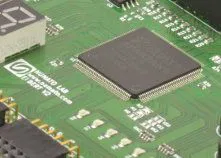Table of Contents:
Plastic enclosures are designed to protect electronic circuits.
Such components not only provide physical protection, but also offer additional functionality that can improve the performance and durability of devices.
A case for electronics effectively absorbs impacts and shocks, thereby minimizing the risk of damage to delicate components.
In addition, it effectively insulates against external factors.
Thus, it provides a protective barrier against dust, moisture and other substances that can negatively affect the performance of electronics.
Electronics case and its functions
Enclosures are often distinguished by being waterproof and dustproof.
Such specially designed models are equipped with appropriate seals.
They are useful whenever electronics work in a place exposed to water or in an environment with a high degree of contamination.
In addition, the described covers often act as a thermal insulator, protecting systems from overheating or too low a temperature.
In addition to this, it is worth mentioning a few more points. A case for electronics not only protects the components, but also affects the aesthetics of the devices, making them look more professional.
This feature can prove quite important for commercial projects or presentations.
The electronics case comes in a variety of sizes and configurations to fit almost any device, in addition to providing easy modification.
If anything, the user also has the option of customizing the case to meet specific project requirements by personalizing it.
Such items are designed to make use as simple as possible.
The enclosures are often equipped with systems for easy assembly and disassembly.
In addition, they can be made of materials that provide protection against electromagnetic and radio interference.
This allows you to enjoy reliable and stable operation of electronics.
Enclosure for electronics - what class of waterproofing to choose?
One of the most important parameters you need to pay attention to when choosing a case is the waterproof class.
It determines the level of protection of an electronic device against harmful external factors, such as dust, moisture or direct contact with water.
The classification is based on an international standard labeled IP (Ingress Protection).
It consists of two digits.
The first indicates protection against the ingress of solids, while the second indicates protection against the ingress of liquids.
The first digit can be expressed in the range from 0 to 6.
It specifies the level of protection against the penetration of solids and dust.
A value of “0” indicates no protection, while “6” indicates complete protection against dust. The second digit can be expressed in the range from 0 to 8.
It indicates the resistance of the housing to water ingress.
“0” means no protection, while “8” indicates the ability to be submerged in water to a certain depth and for a certain period of time without harming the device.
IP20, for example, means that the enclosure provides protection against contact with fingers or objects with a diameter of not less than 12.5 mm and does not protect against water in any way. IP54 indicates that the housing protects against limited ingress of dust and against water droplets falling at any angle.
IP68, on the other hand, provides the greatest protection against dust and against prolonged immersion in water more than 1 meter deep.
However, specific immersion conditions will be determined by the manufacturer.
When choosing an enclosure’s waterproof rating for electronics, the first thing to consider is the environment in which the device will be used.
For indoor use, the risk of contact with water is minimal.
This means that an enclosure with a lower protection class, such as.
IP20 or IP54.
On the other hand, if the device will be used outdoors, where harsh weather conditions may prevail and the risk of contact with water will be high, a higher waterproof class is needed, such as.
IP65, IP67 or IP68.
Only such an enclosure for electronics will ensure adequate protection and trouble-free and long operation of the device.
How to choose the right enclosure for electronics? Other parameters
One of the basic, but very important parameters to consider when choosing an enclosure is its size and the ability to fit the cover to the size of the circuit board and other components.
Another consideration is the choice of material and color.
These affect the appearance of the enclosure as well as its performance characteristics.
As for the material, the best choice will be high-quality plastics, as they guarantee durability and resistance to damage.
As for the color, it all depends on our preferences.
The choice is wide, ranging from black housings to gray and transparent ones.
Some enclosures offer additional features that can be very useful in many cases.
Often you can find DIN-rail mounting options.
Such an option makes installation in control cabinets easier.
Some enclosures are also equipped with so-called.
mounting ears.
They allow you to easily attach the enclosure to various surfaces.
Of course, the key issue is the compatibility of the electronics enclosure with the components planned for use.
Adapting the above-mentioned parameters to the specifications of the project and your own needs will not only ensure effective protection of electronic components, but at the same time improve the functionality of the device.
How useful was this post?
Click on a star to rate it!
Average rating 0 / 5. Vote count: 0
No votes so far! Be the first to rate this post.




















